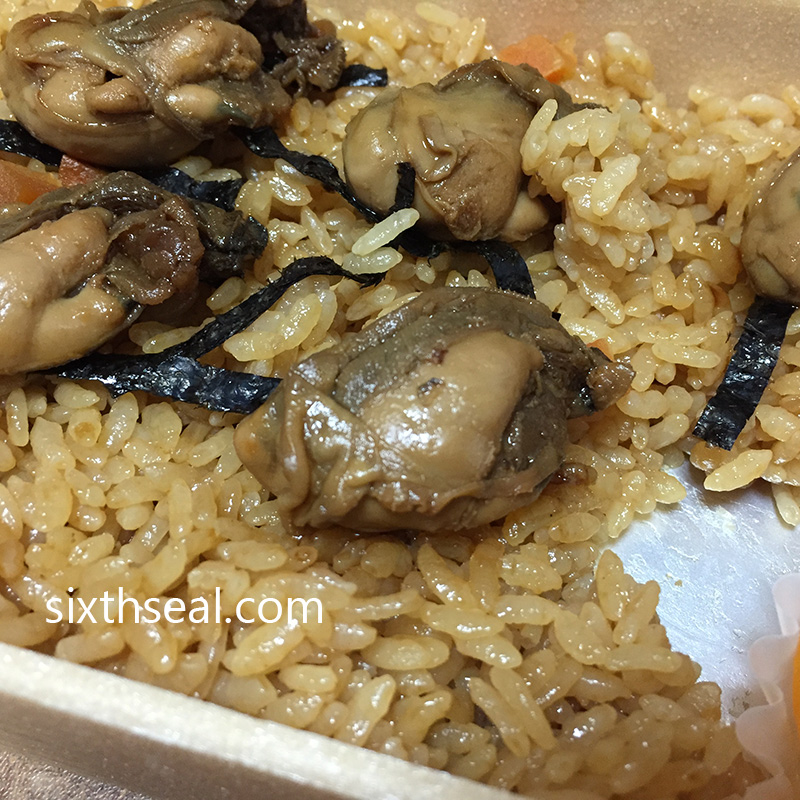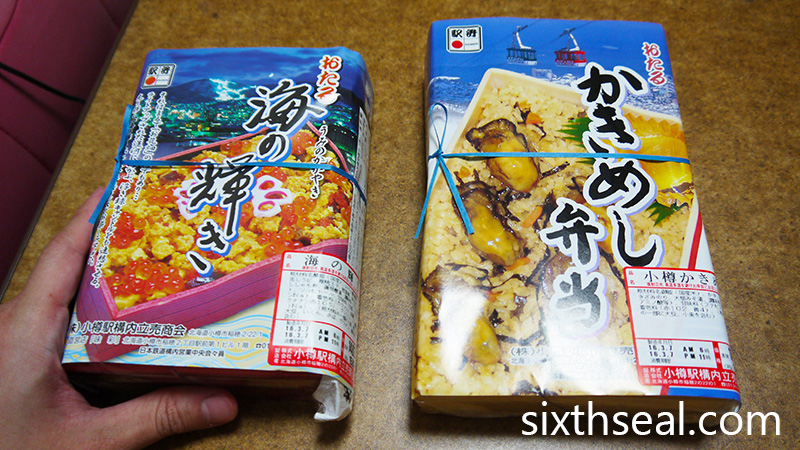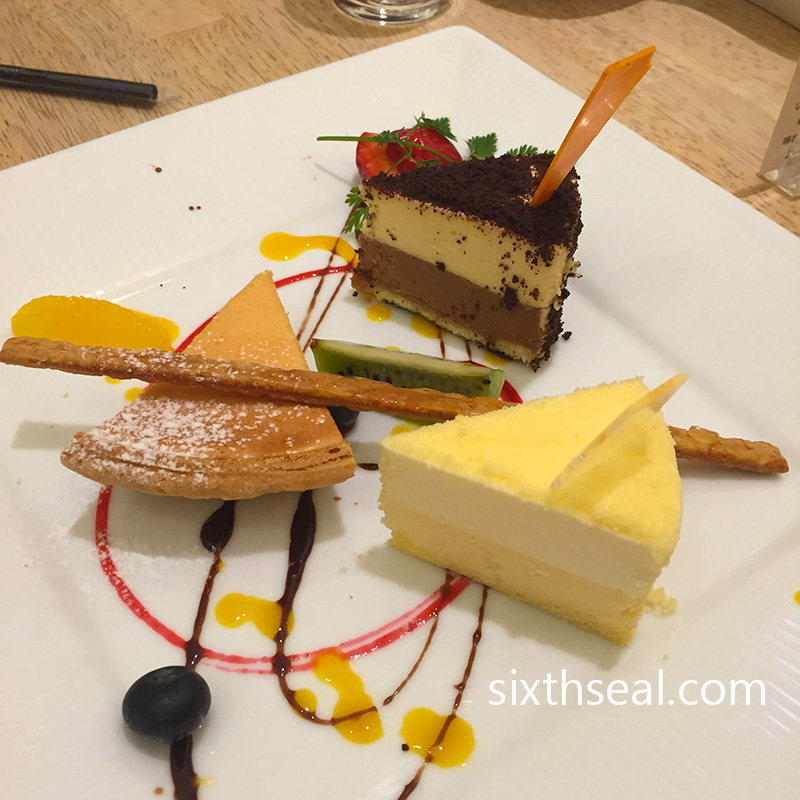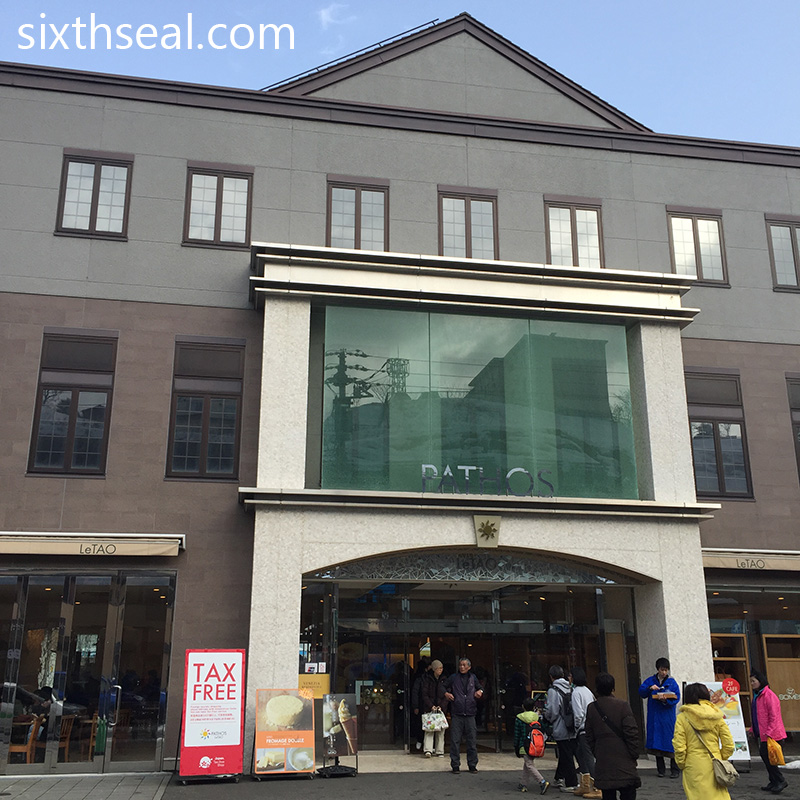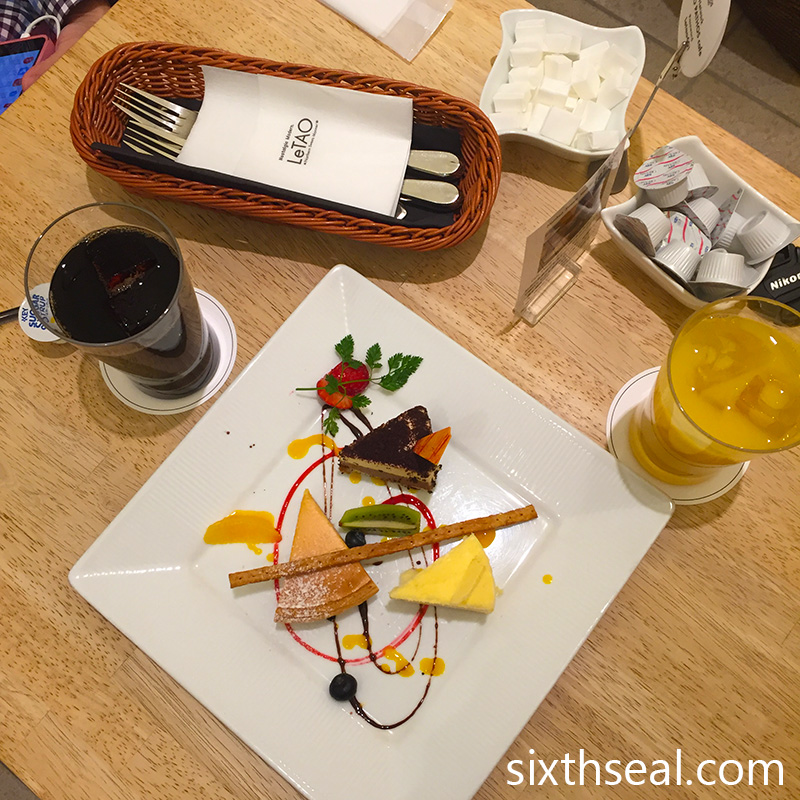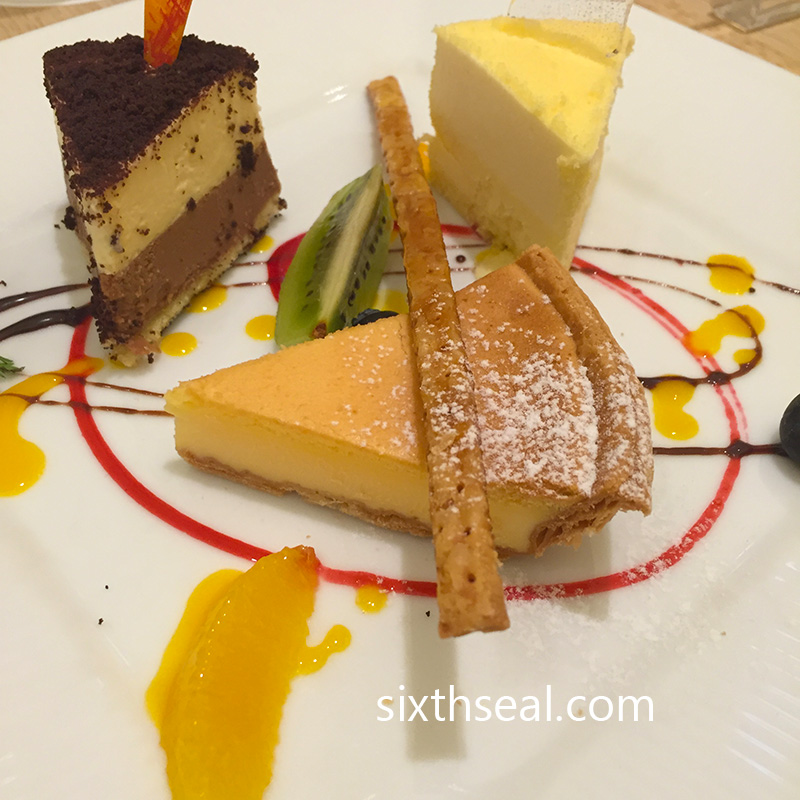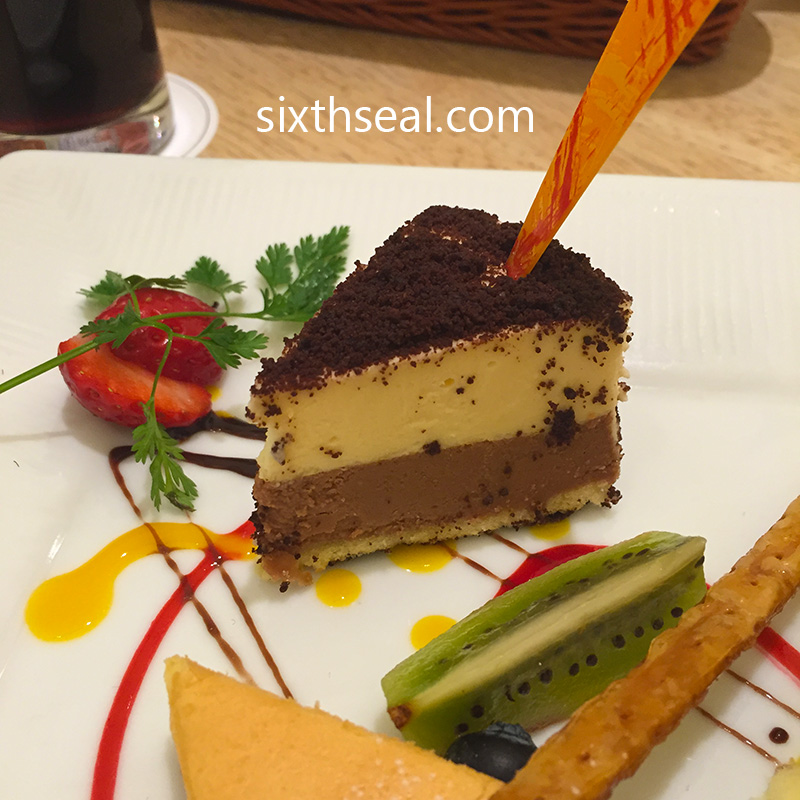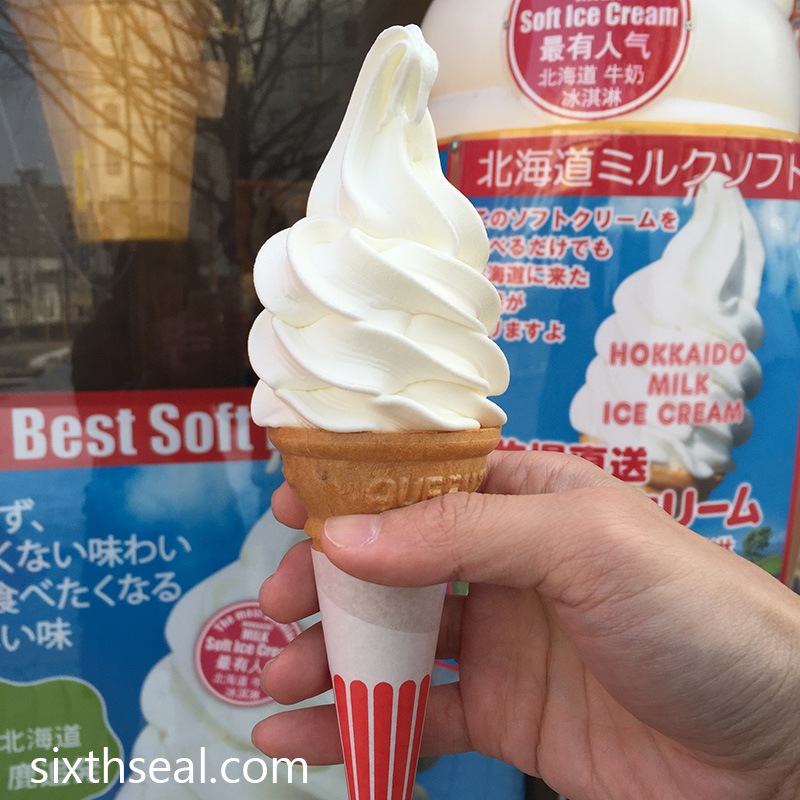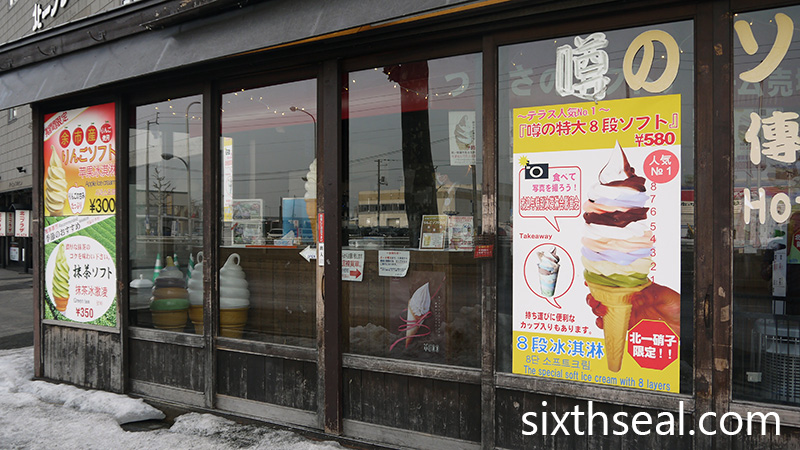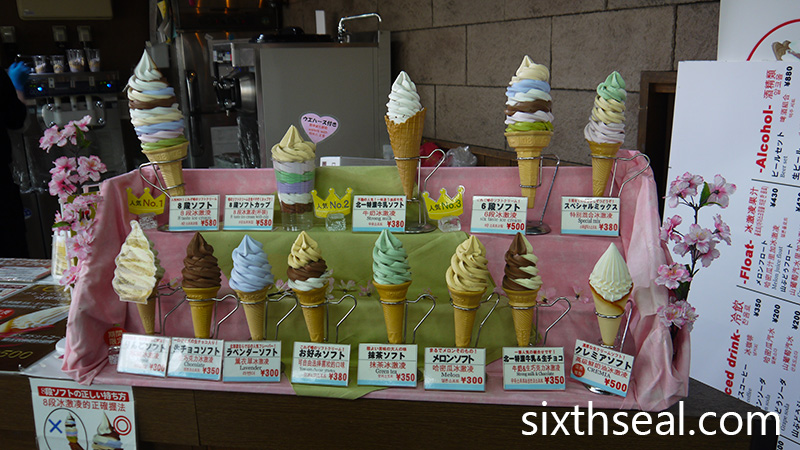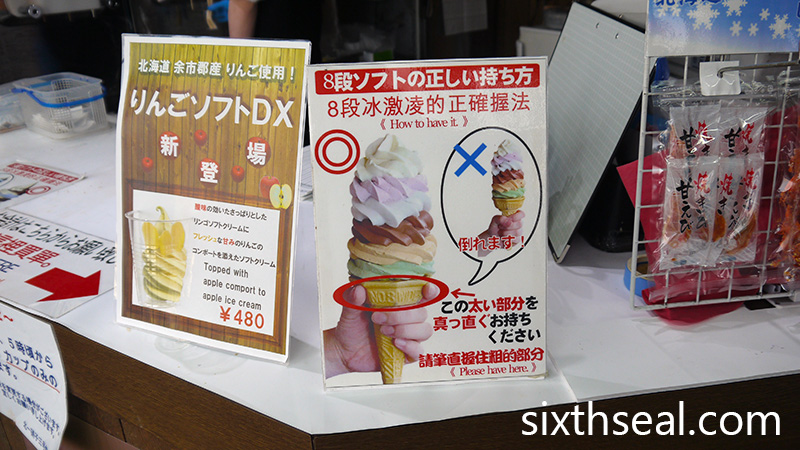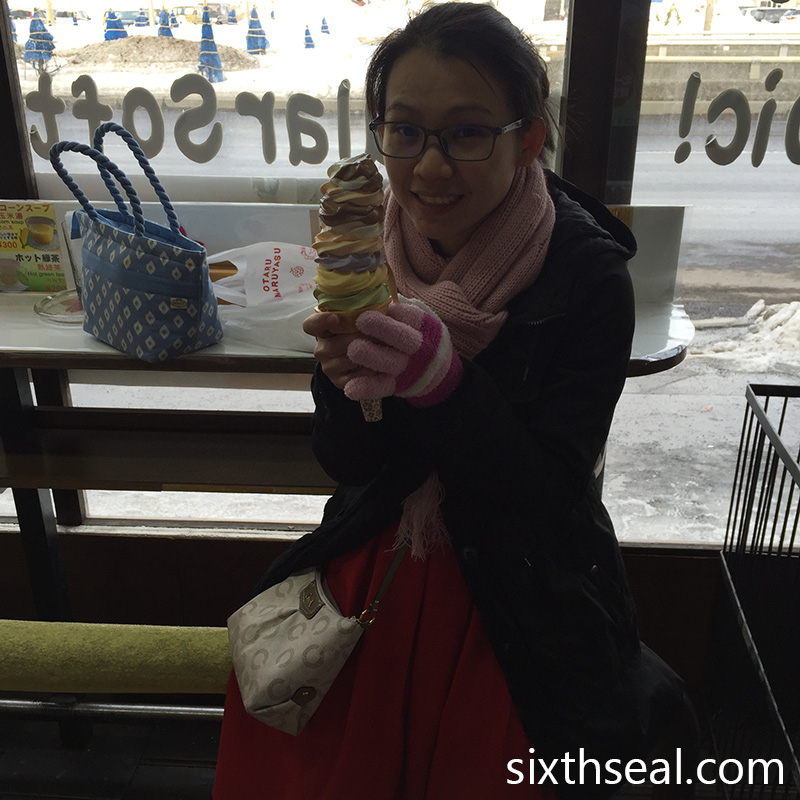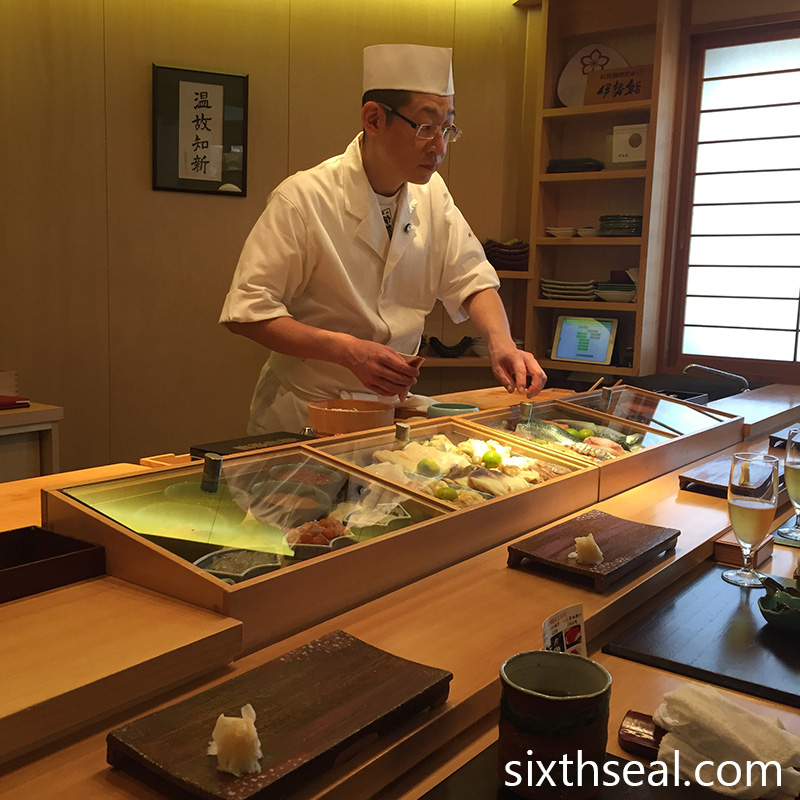
This is one of the highlights of our trip. Isezushi is the only One Michelin Star sushiya (sushi bar) in Otaru and I wanted to eat there as soon as we made plans to go to Hokkaido. I made reservations weeks in advance. You have to call them as they don’t accept Internet reservations. It took two calls of about 20 minutes to get the message though but I managed to get us counter seats!
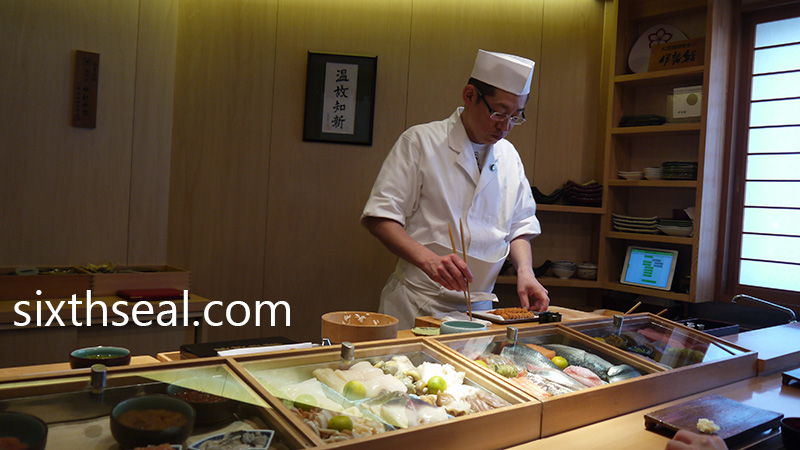
It’s always important to get a counter/bar seat if you’re going for the omakase. The experience is diluted if you’re seated at a table as you can’t watch and interact with the sushi chef. You want a counter seat as the tempo is dictated by the sushi chef, putting pieces of sushi on your personal board one-by-one, as it is made, instead of all at once if you’re seated at the tables.

This is how sushi is meant to be eaten and I’m glad I took the time (and long distance call charges) to communicate that I wanted a counter seat at all costs.
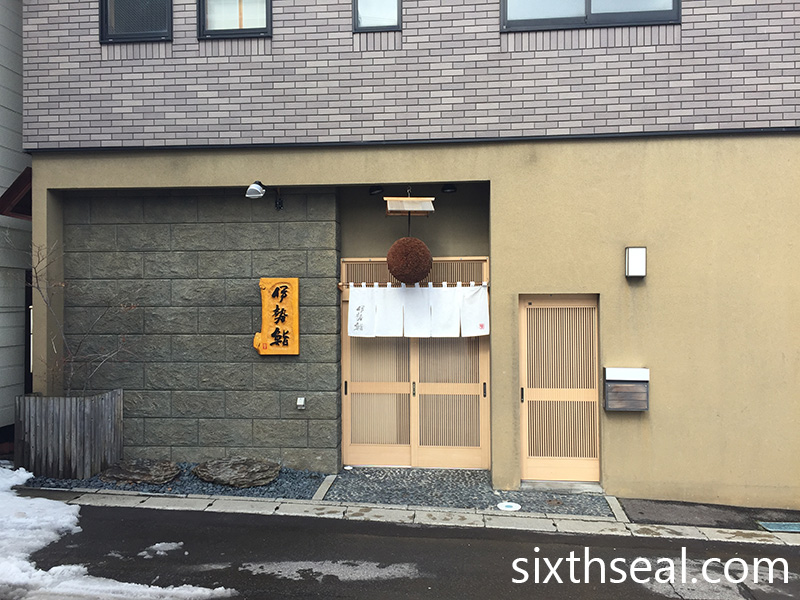
Isezushi is located about 6 minutes away from JR Otaru Station. The restaurant is very minimalistic on the outside. You won’t be able to know what they’re serving if you don’t read Japanese and there are no signboards in English. The doors are perpetually closed with no waiter outside. This is a strict reservation-only place and it’s very prim and proper.
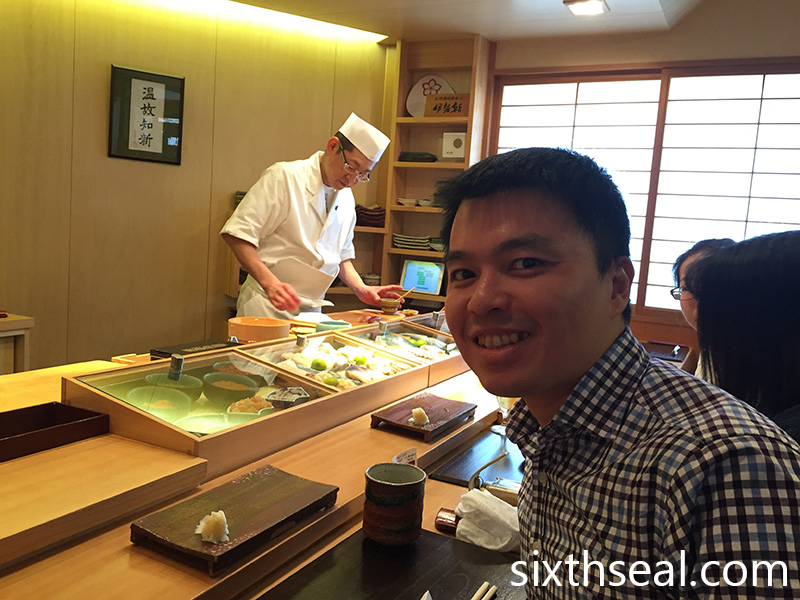
Our reservation was at 12:30 pm but I made sure we arrived nice and early at 11:50 am as I know they are very particular about punctuality. Sure enough, the sushi chef was pleasantly surprised we were there early and seated us promptly. There were two other Japanese women beside us on the counter and a lone Japanese male taking up the last seat. The two tables behind the counter were full too!
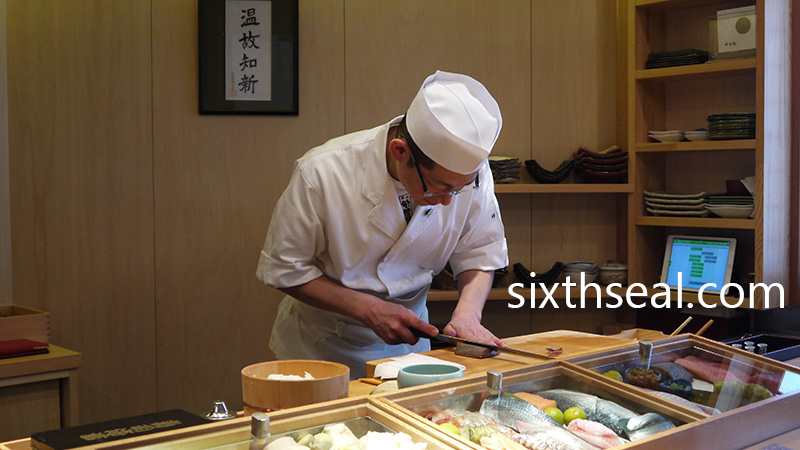
There are three different omazake tiers – this is the classic Sho/Chiku/Bai trio of price levels in Japanese dining. The most premium one is called Jun (JPY 6,300) and has 16 pieces of sushi. The middle tier is Dai (JPY 3,600) and it’s made up of 12 pieces of sushi made exclusively from Hokkaido ingredients. The budget set is Gin (JPY 3,000) and has 10 pieces of sushi. I went for the Jun and my better half opted for the Dai omakaze.
Isezushi Jun Omakase (16 pieces for JPY 6,300)
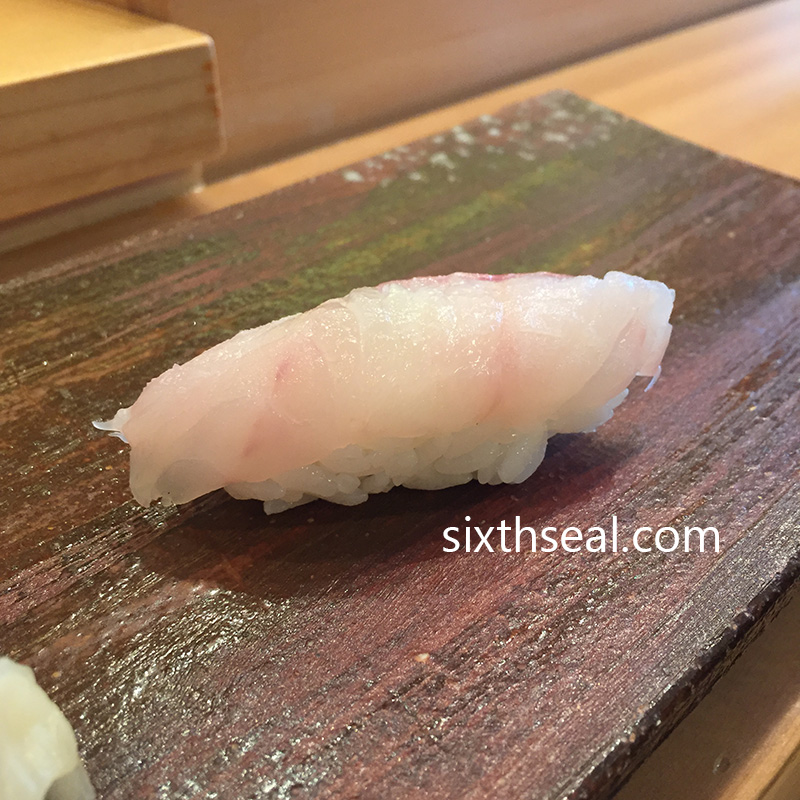
Soi (Rockfish/大とろ)
This is a nice start to the meal. I love how the sushi chef masterfully seasoned everything with just enough citrus/soy/wasabi/salt so you’re not supposed to use any more yourself. I’ve also never seen citrus being used to season rockfish before and it was tender and flavorful, with a sharp and refreshing bite.
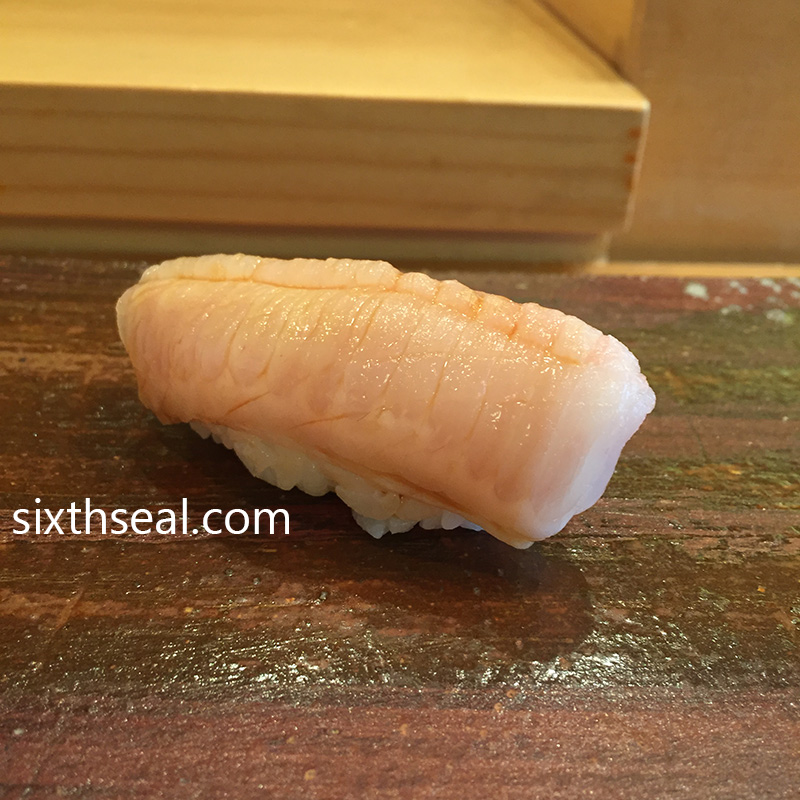
Engawa (Edge of flounder/さば漬け)
This is a very rare piece of sushi which you can only get from the high end Jun omakaze. You can’t get it from the a la carte menu. It’s described as “flounder’s edge” and the sushi chef showed me the piece of fish where it came from. It’s a crunchy and chewy neta.

Akamizuke (Tuna belly marinated in shoyu/本鮪の漬)
This is a piece from the tuna’s belly called “zuke”. It’s marinated in soy sauce for a while and served on top of sushi. This is the best tasting and highest quality akamizuke I’ve ever had! I’ve eaten a lot of “akamizuke” which are just pieces of cheap tuna in soy sauce and it tastes completely different from the real thing.
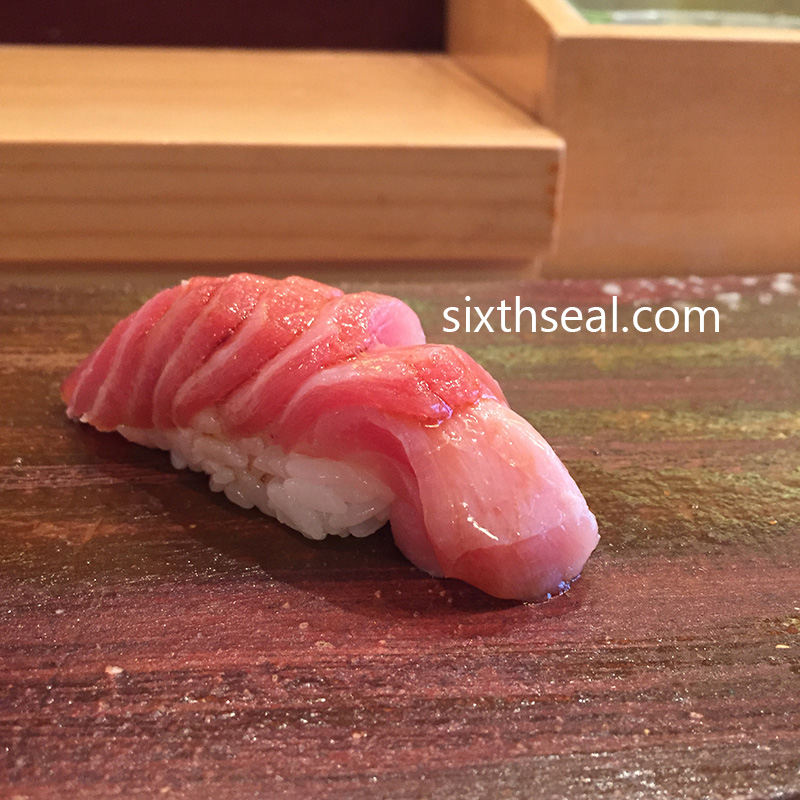
Otoro (Fatty tuna belly/大とろ)
This requires no further explanation. It’s the most expensive and most premium piece of sushi. There’s only a relatively tiny amount of meat on a bluefin tuna that can be properly classified as otoro and they usually sell for USD 30 or more per piece. The otoro was deliciously fatty, with a rich and lingering buttery mouthfeel. I’m very happy to have had experienced this.

Sabazuke (Mackerel marinated in shoyu/鯖)
Yum! This perfectly complements the otoro that I had just eaten. Just to be sure, I cleansed my palate with pieces of pickled ginger before starting on each piece of sushi. The mackerel is sliced very well, the difference between a high end sushi bar and a conveyer belt sushi is nowhere more apparent than here – the cuts are precise and there are multiple ones done on the surface of the fish so it produces an explosion of flavor when it touches your tongue.
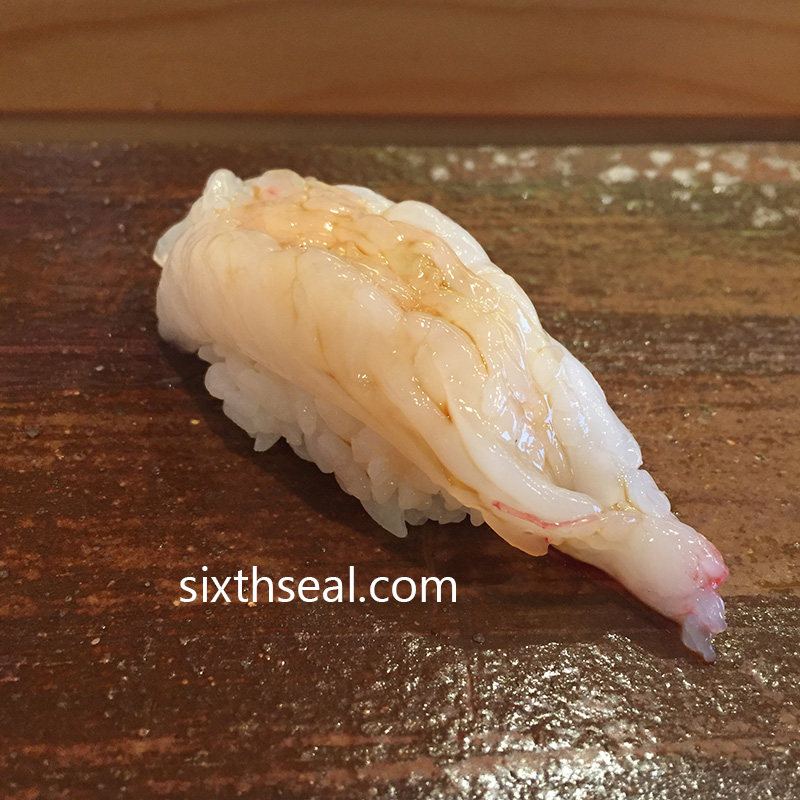
Botan-ebi (Sweet jumbo Japanese shrimp/ぼたんえび)
This is the large sweet shrimp that’s only available in Japan. They’re also called Toyama Shrimp and they’re found in Hokkaido. It’s a highly seasonal item that’s only available from November to March so I’m lucky to catch the tail end of the season (no pun intended). It’s my favorite piece of sushi – I love raw shrimp.
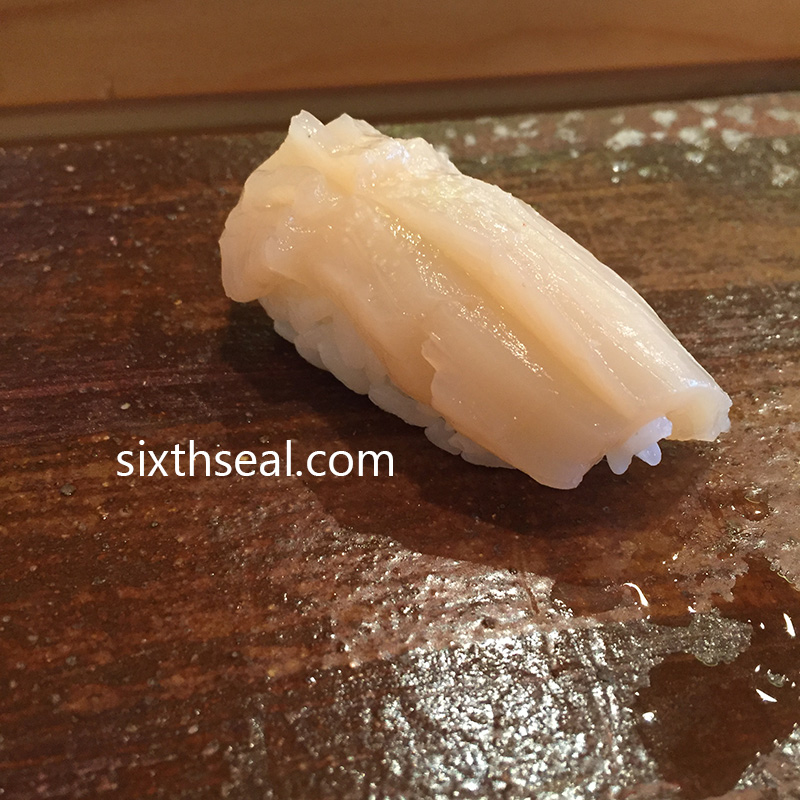
Hotate (Scallops/帆立貝)
Hokkaido has a HUGE local scallop industry and I’ve eaten a lot of scallops in many forms (sashimi, dried, and even in ramen) while I was here. They’re possibly one of the sweetest sushi toppings around. It’s delicious and I closed my eyes in pleasure while eating it. No joke.

Hokkigai (Surf clam/ホッキ貝)
Crunchy! It’s very fresh too since the surf clam is sourced right from Otaru on the very day itself. I liked the contrasting texture between the soft scallops to the crispy surf clam.
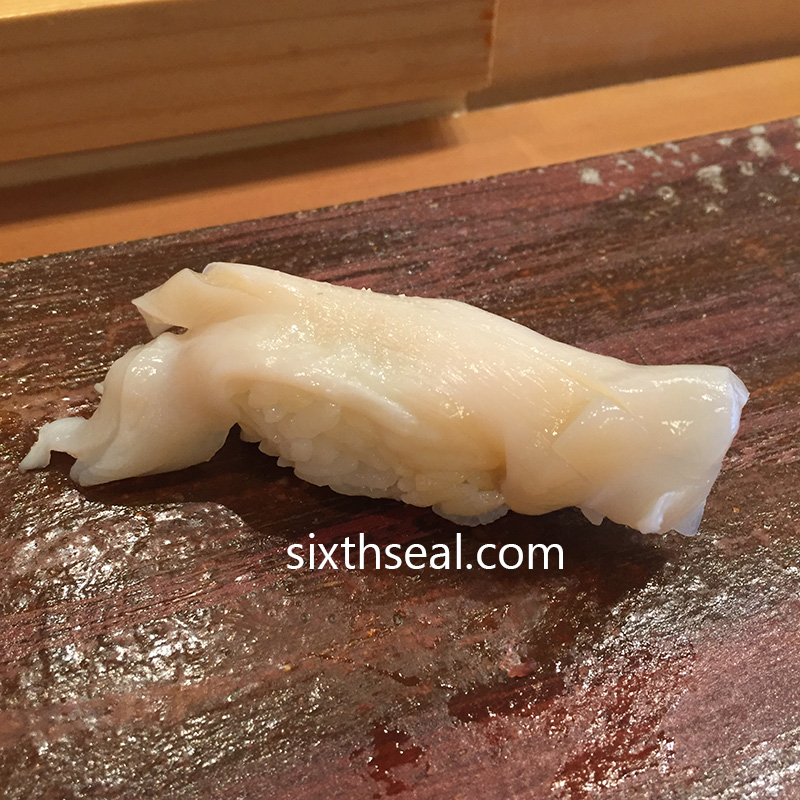
Tsubugai (Whelk/ツブガイ)
I like whelk and I love how the sushi chef carefully sliced this from the shell, pounded it a few times with his knife and made small and shallow cuts diagonally to tenderize and let the flavors out.
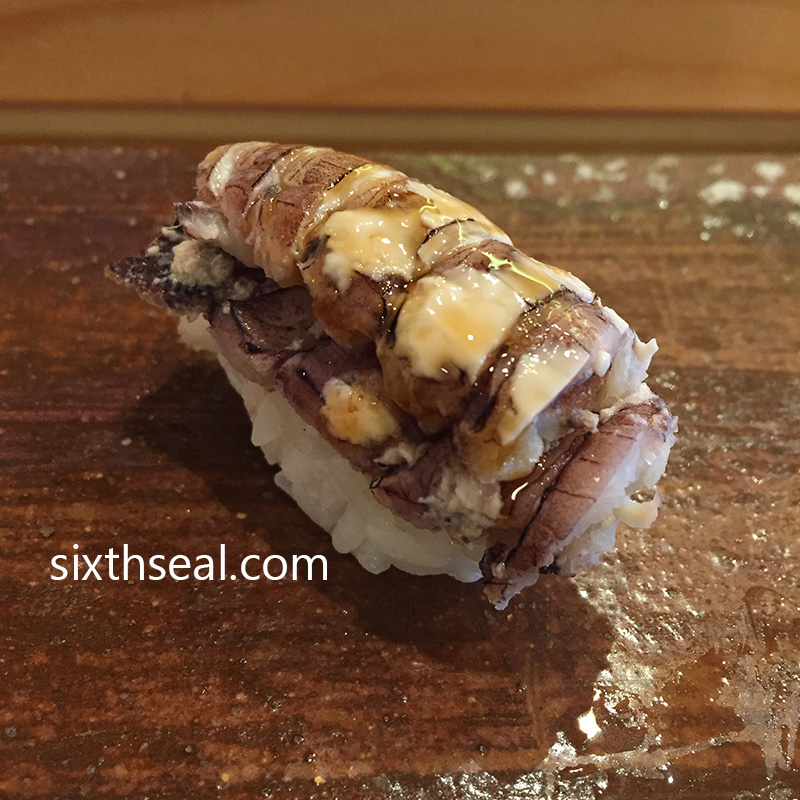
Shako (Squilla mantis shrimp/シャコ)
This is what we call Mantis Prawn back home but from a different species. Squilla can only be found higher up, like in Japan. It’s cooked in mirin and sake and the cook time is quite unusual. It comes off as slightly textural, with many “grains” due to the amount of time it has spent and I found out that’s how the Japanese like it. It’s very sweet and has the ENTIRE shrimp on top of the sushi, both the body and tail, stacked on top of each other.
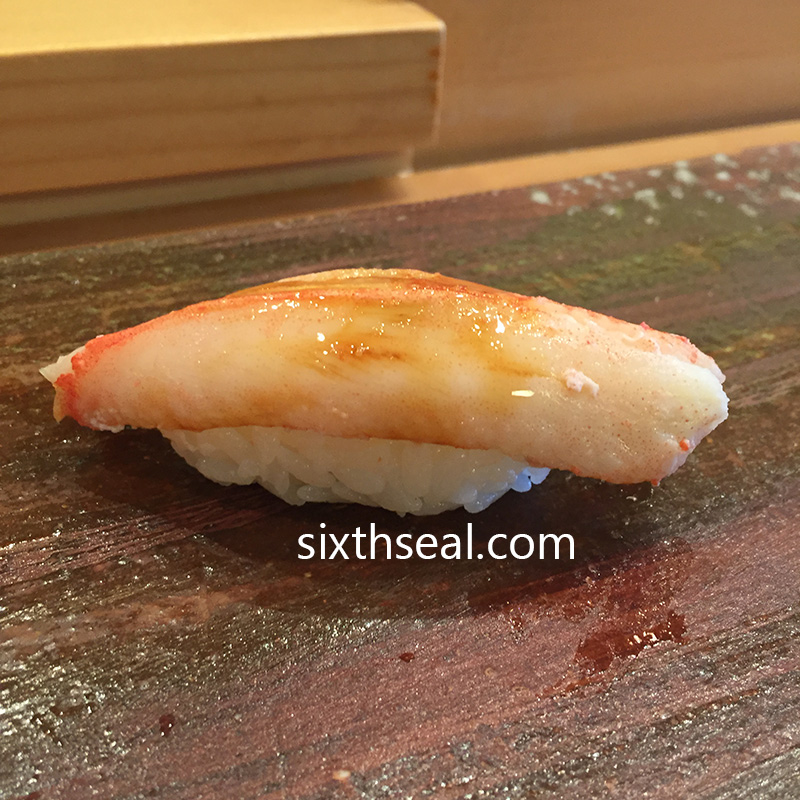
Zuwaigani (Snow crab/ズワイガニ)
Snow crab is one of the trio of crabs that’s abundant in Hokkaido around this time. It’s very sweet and pleasant tasting. This is one of the rare cooked sushi (the other is the Mantis Shrimp) and I’ve eaten it both raw and cooked in Sapporo and I prefer raw snow crab meat. However, cooked works better with the omakaze tempo.
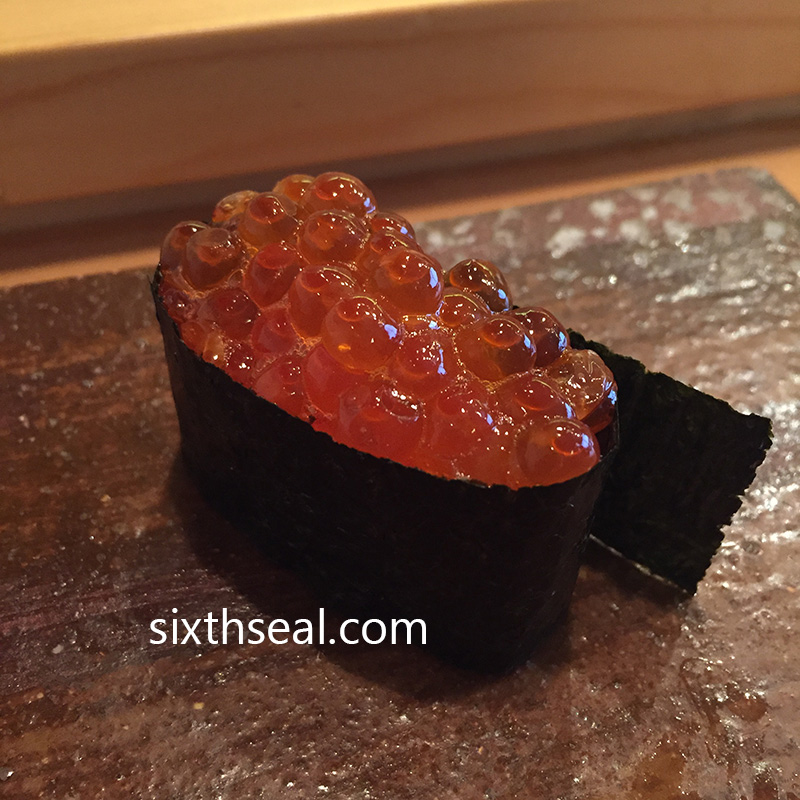
Ikura (Salmon roe/イクラ)
This is the first of the Gunkanmaki (Battleship Roll) – so called coz of the strip of nori (dried seaweed) that goes around the perimeter to hold in the topping. The salmon roe burst in my tongue, and the ratio was perfect (and generous).
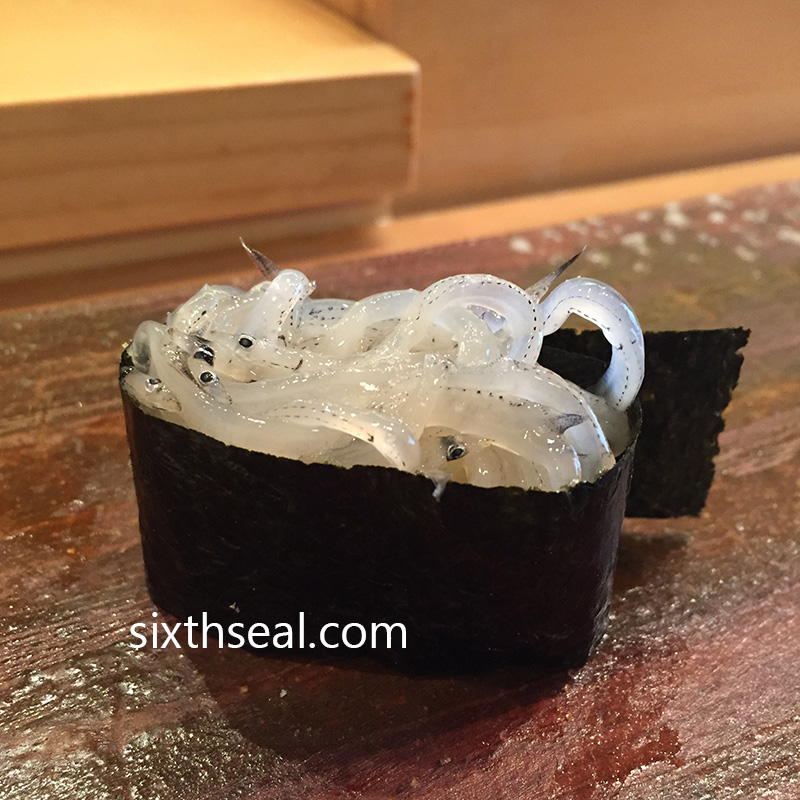
Shirauo (Japanese icefish/白魚)
I have heard a lot about these tiny transparent fishes and I saw them on the sushi counter when I came in. I vowed I’ll order them a la carte if I didn’t get it in my omakaze. Luckily, I did get one as part of my meal. It was another exclusive for the most expensive Jun set. I loved the way the little fishes rolled around my tongue. It’s ticklish.
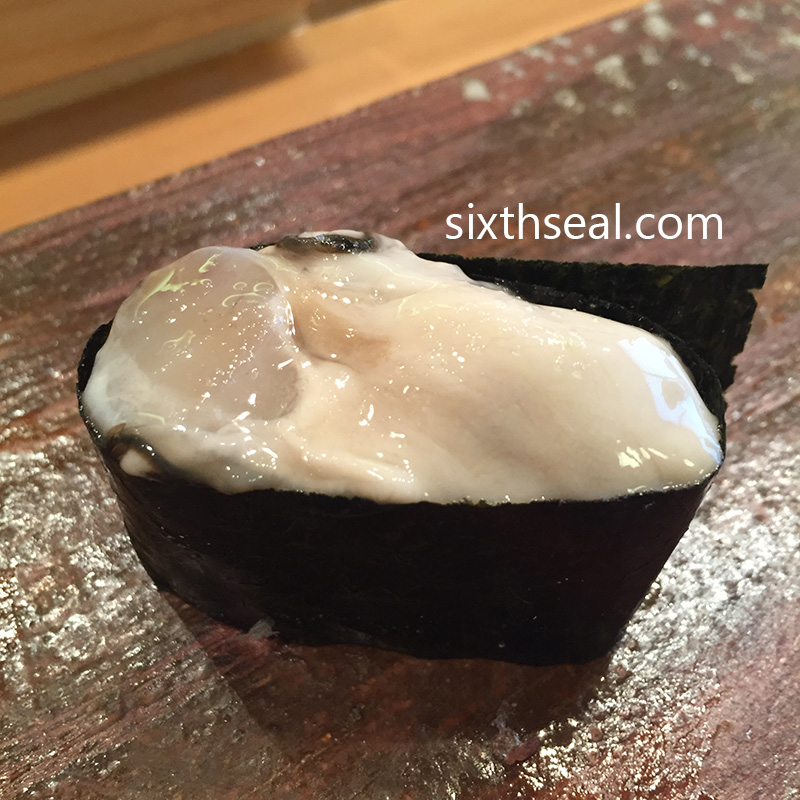
Namagaki (Raw oyster/生ガキ)
Yum! The saline and moreish raw oysters (there are two on the sushi) blew me away. It’s ultra fresh and local.
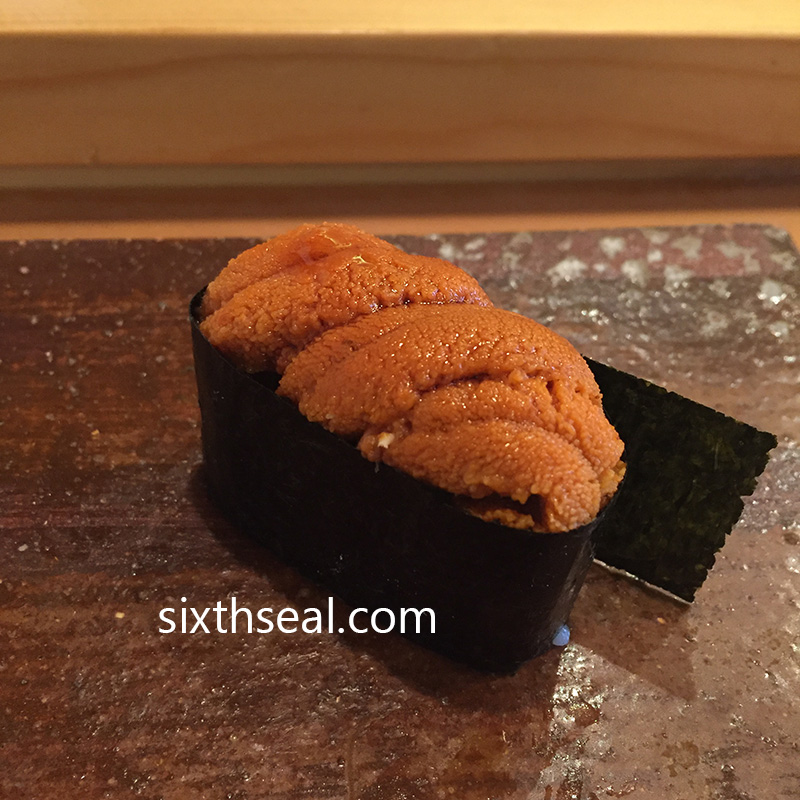
Uni (Sea urchin/うに)
What is heaven? I think this may be right beside it in the dictionary. Behold! The sea urchin in Otaru is Grade AAA compared to the sad specimens we get locally. This is a premium variety called ezo bafun uni (short-spined sea urchin) that’s caught in Hokkaido and best during spring. It was so creamy and delicious I nearly came in my pants. I know that’s not what a proper gourmand should be writing in a review but it’s true, so there! 
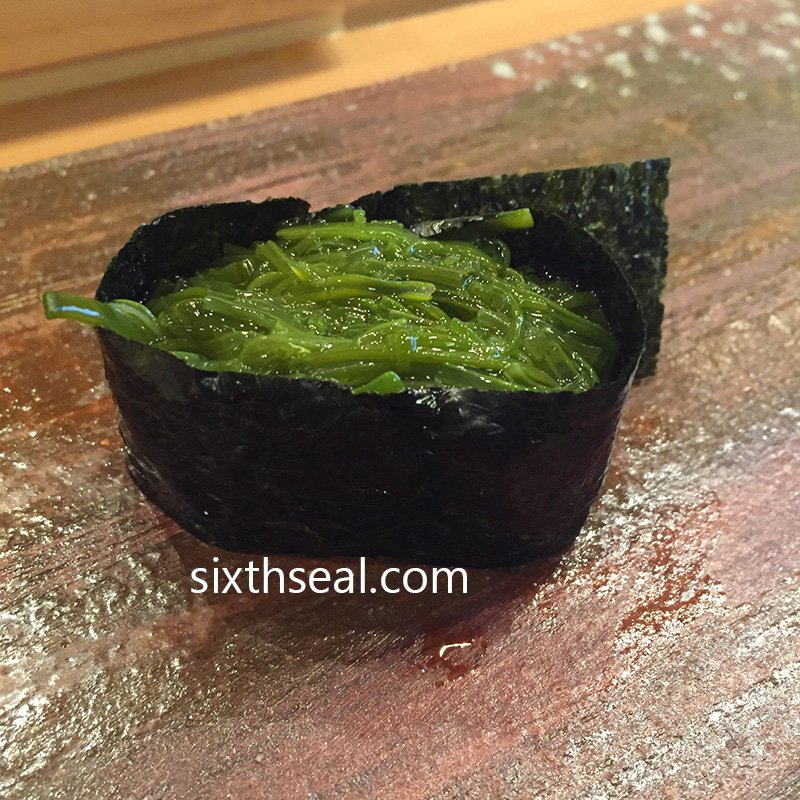
Wakame (Sea mustard/若布)
This is my last piece of sushi. It’s a palate cleansing topping of edible seaweed, what they call wakame or sea mustard. I’ve seen a similar item as the cheapest version of sushi at local conveyer belt places but this tastes nothing like it. It’s very slippery and fresh.
Isezushi Dai “Hokkaido Special” Omakase (12 pieces for JPY 3,600)

Hirame (Flounder/平目)
This is my dear’s omakaze which features only local Hokkaido seasonal ingredients. The first one was flounder or fluke.

Sake (Japanese salmon/鮭)
A beautiful slice of Japanese salmon. Too bad you’re supposed to eat sushi in one bite or I’ll have loved to try it.
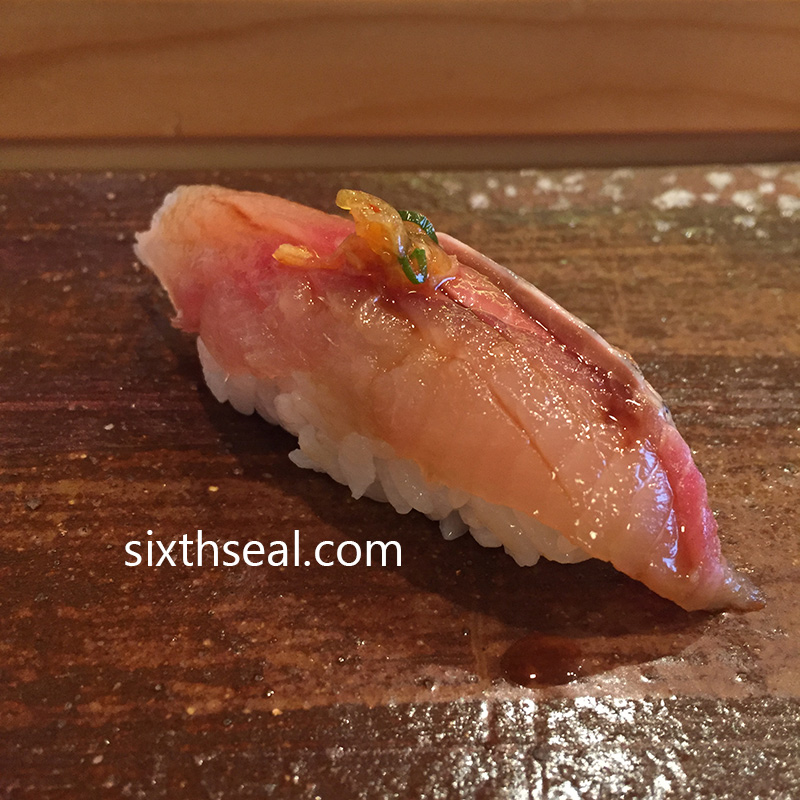
Kibinago (Japanese herring/黍魚子)
These are not the herring we’re using to seeing. The silver-stripe round herring is a Japanese species that’s very popular as sushi and sashimi in Hokkaido.
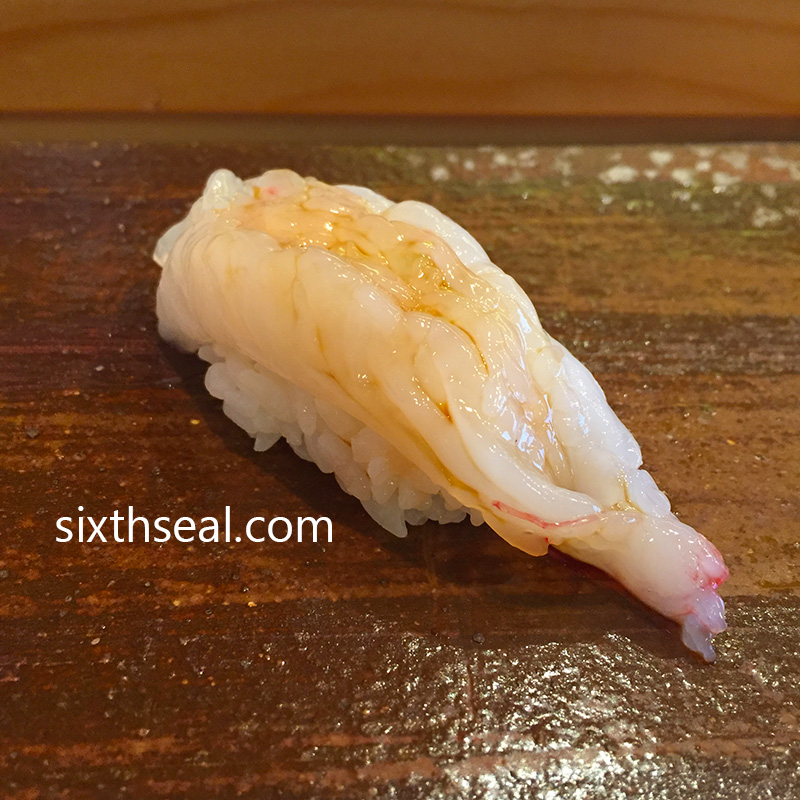
Botan-ebi (Sweet jumbo Japanese shrimp/ぼたんえび)
This is the same thing that I had, a local in-season sweet raw Japanese shrimp.
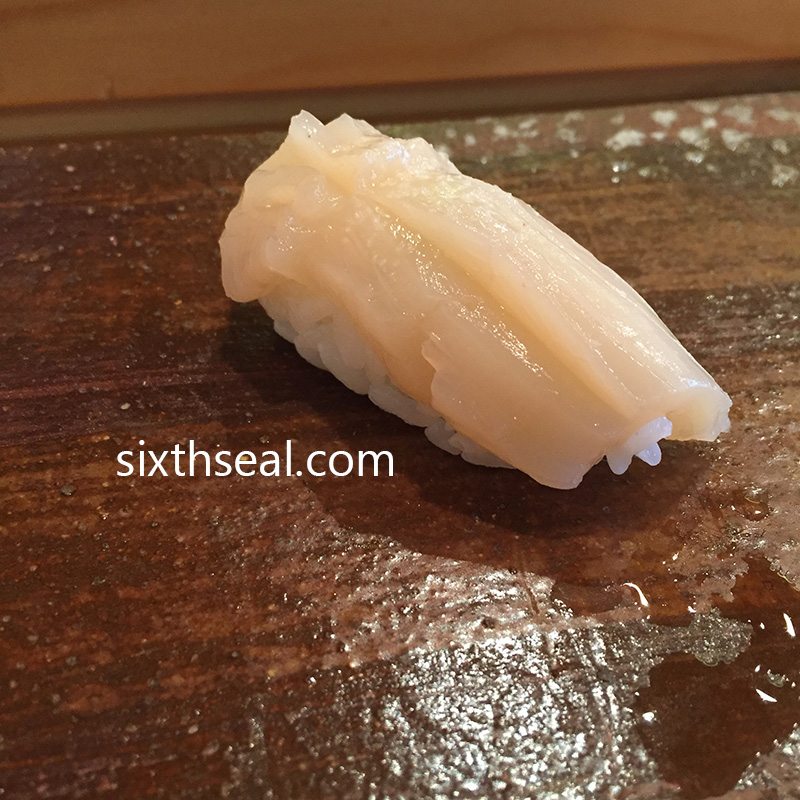
Hotate (Scallops/帆立貝)
I also had the local Hokkaido scallops. I was surprised to see that my dear liked it too!
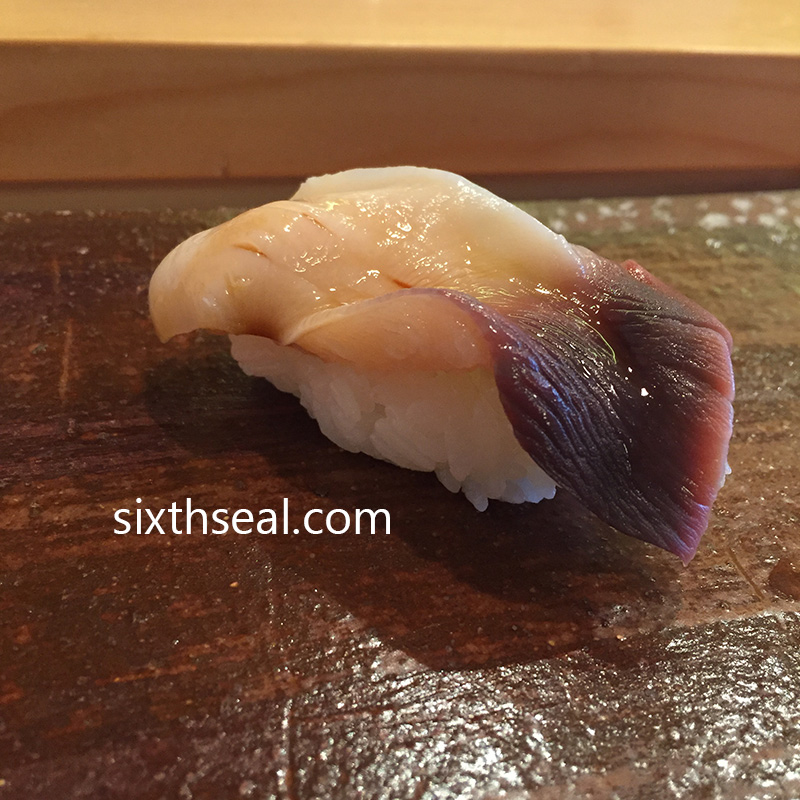
Hokkigai (Surf clam/ホッキ貝)
This was also on my Jun omakase. It’s a different picture though, due to the slight variations in the way it’s cut by the sushi chef.
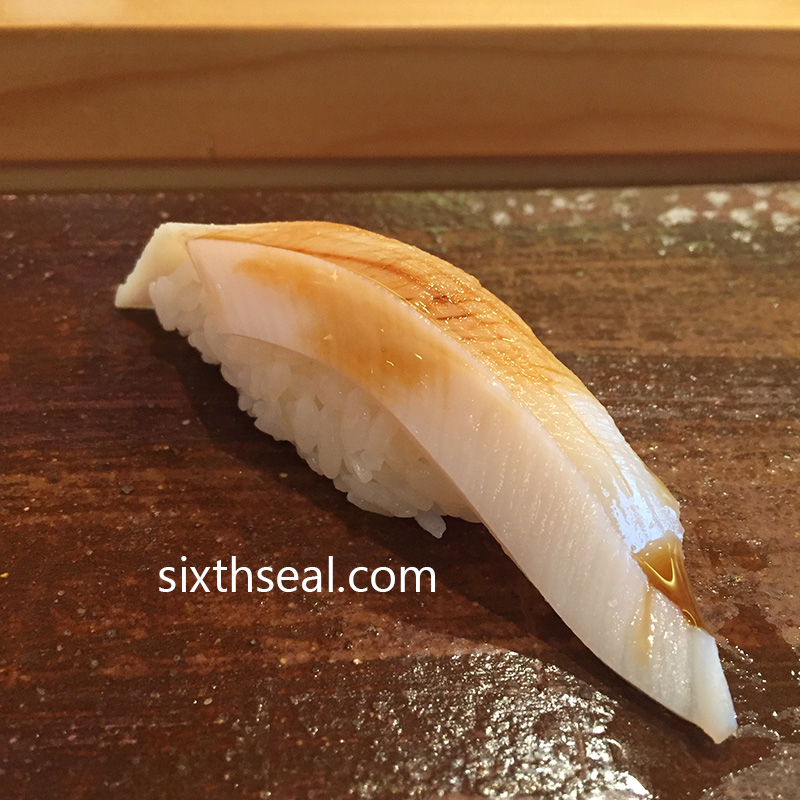
Mizudako (Octopus/たこ)
This was actually described as “Head of Octopus” to us. I guess that means this meat is from the head of the octopus instead of the tentacles of the cephalopod.
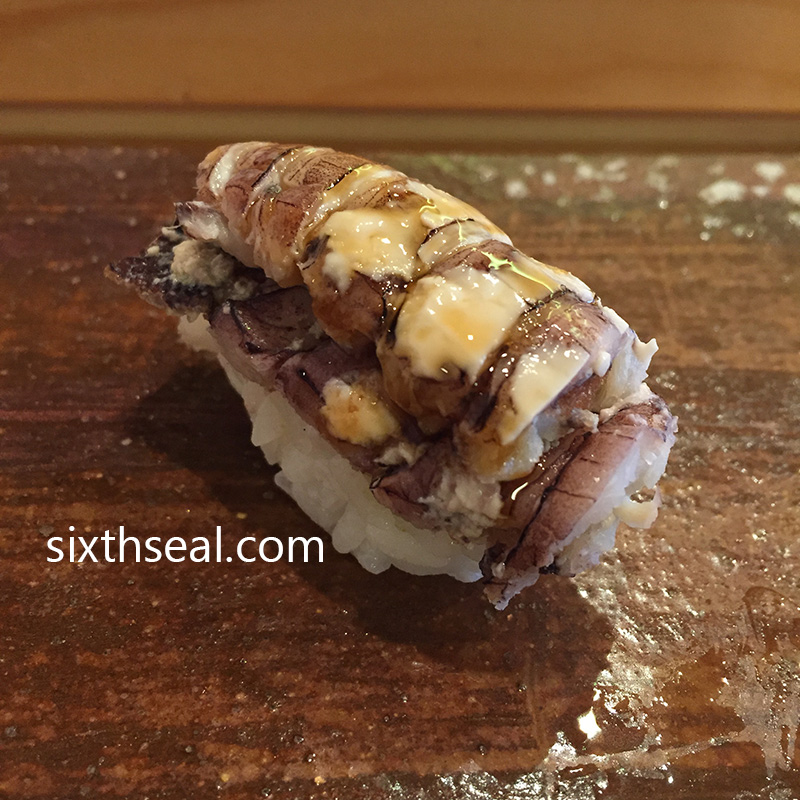
Shako (Squilla mantis shrimp/蝦蛄)
Yup, there are a few items that popped up on both our menus coz it’s a local Hokkaido specialty. My dear didn’t like the texture that much though. I personally thought the creamy sauce they made with the head of the mantis shrimp to top this sushi is out-of-this-world!
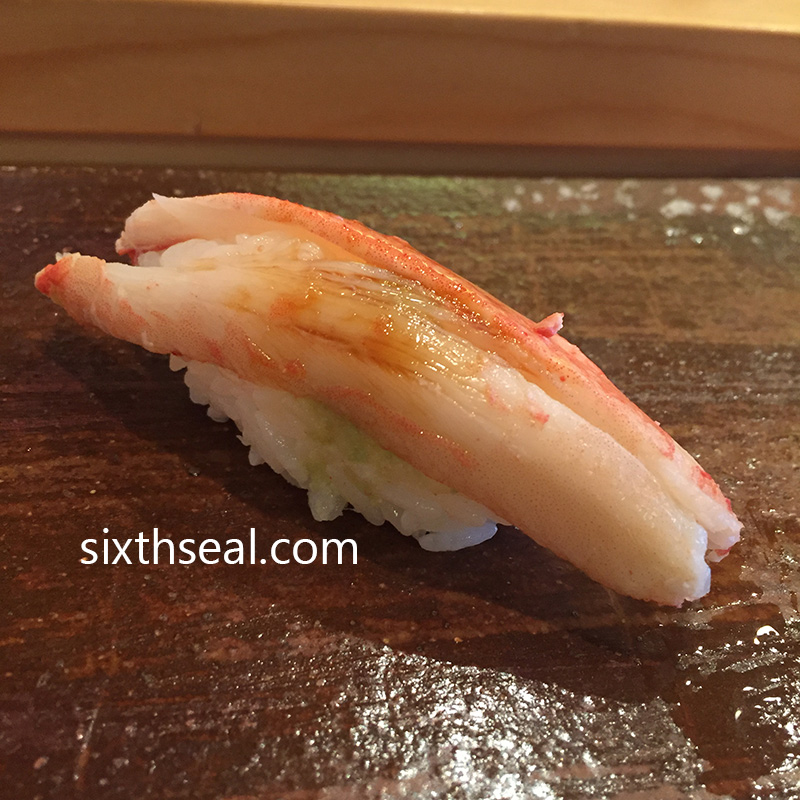
Zuwaigani (Snow crab/ズワイガニ)
Snow crab leg. I also had this and it was delectable.
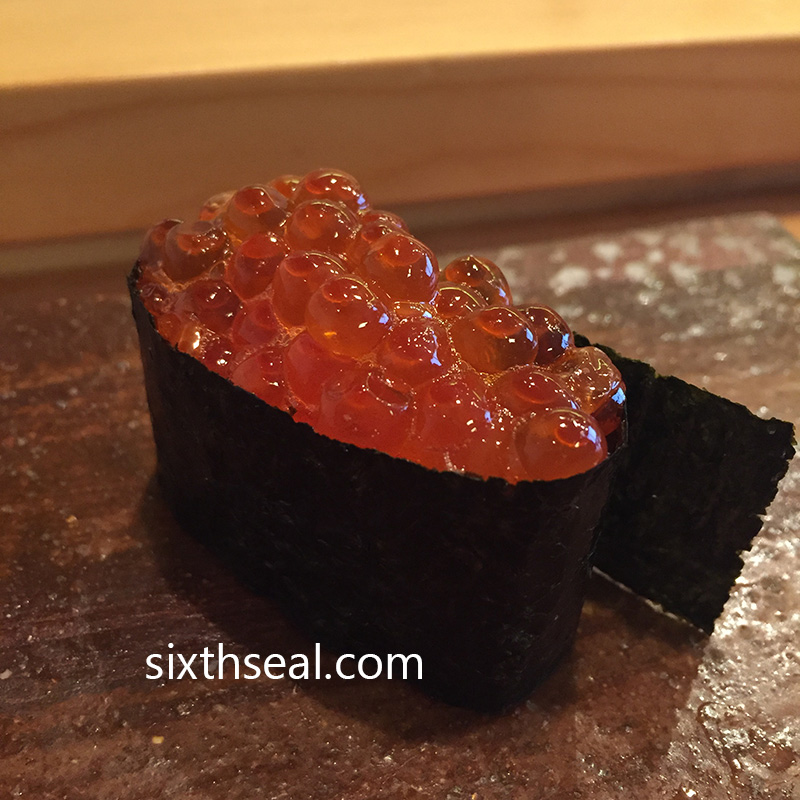
Ikura (Salmon roe/イクラ)
These are roe from local salmon, very rare.
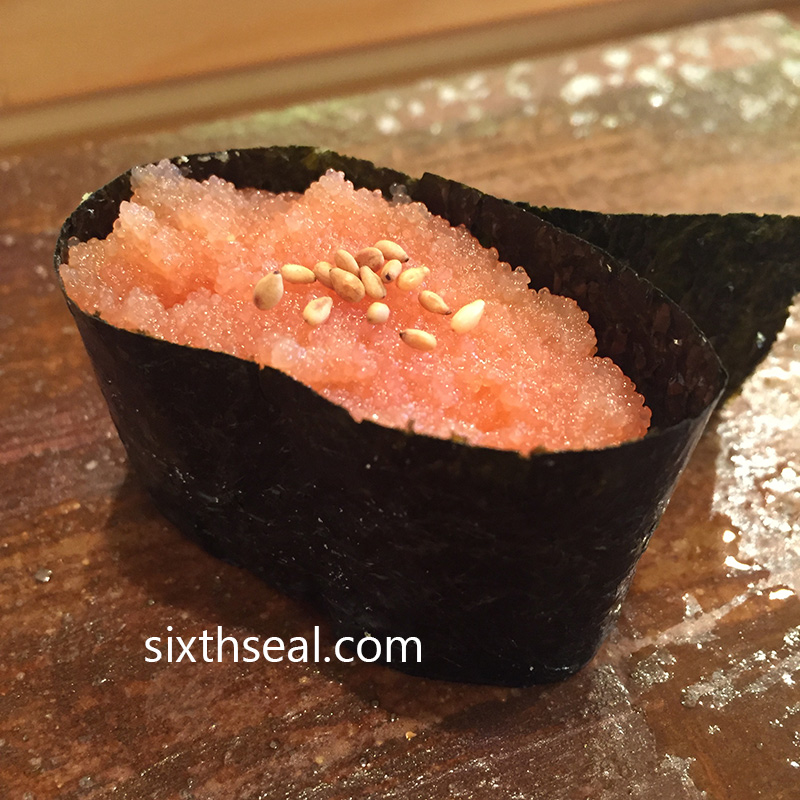
Komaiko (Saffron cod roe/コマイ)
I’m not sure if I got the hiragana correct or not but the romanji is right. Komaiko means saffron cod roe and it’s quite an unusual topping for sushi. The sushi chef sprinkled a few toasted sesame seeds on top. I wish I could have eaten this too but I know etiquette says you’re not supposed to share so we didn’t. I did order a la carte after though. Haha.
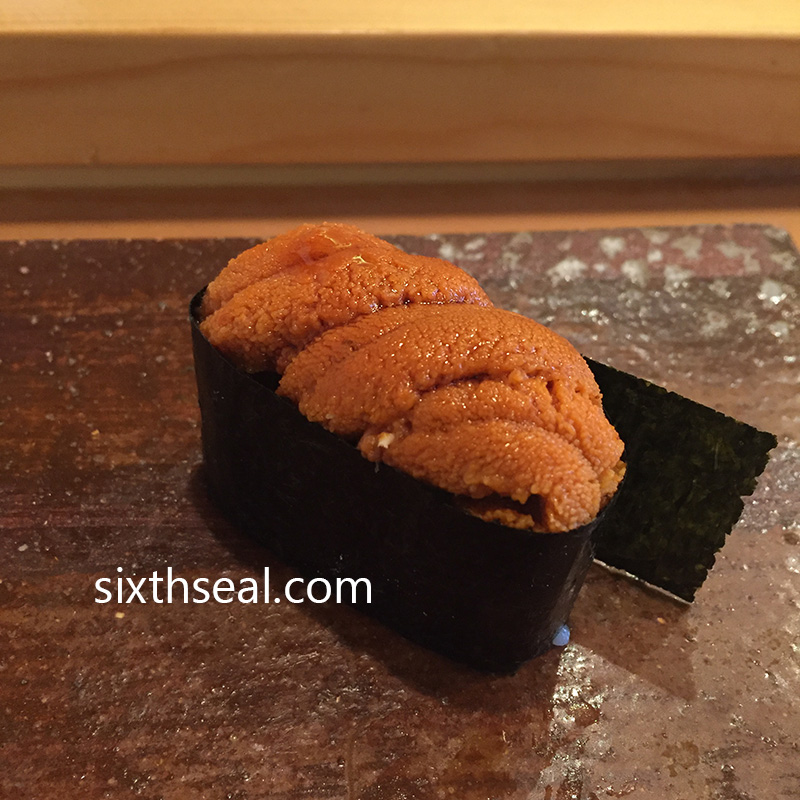
Uni (Sea urchin/雲丹)
Her Dai omakaze ended with luxurious uni as well. The sea urchin gonads are exquisite! Hokkaido uni is said to be the best in the world and this is ezo bafun uni, the best of the best. It’s nicknamed sea chestnut coz it tastes like chestnuts and comes in beautiful orange. My better half loved the sushi here (while she’s usually apathetic about local sushi) coz the rice is actually warm/hot instead of cold! The rice-to-neta ratio is very generous too and it’s just better in every single way.
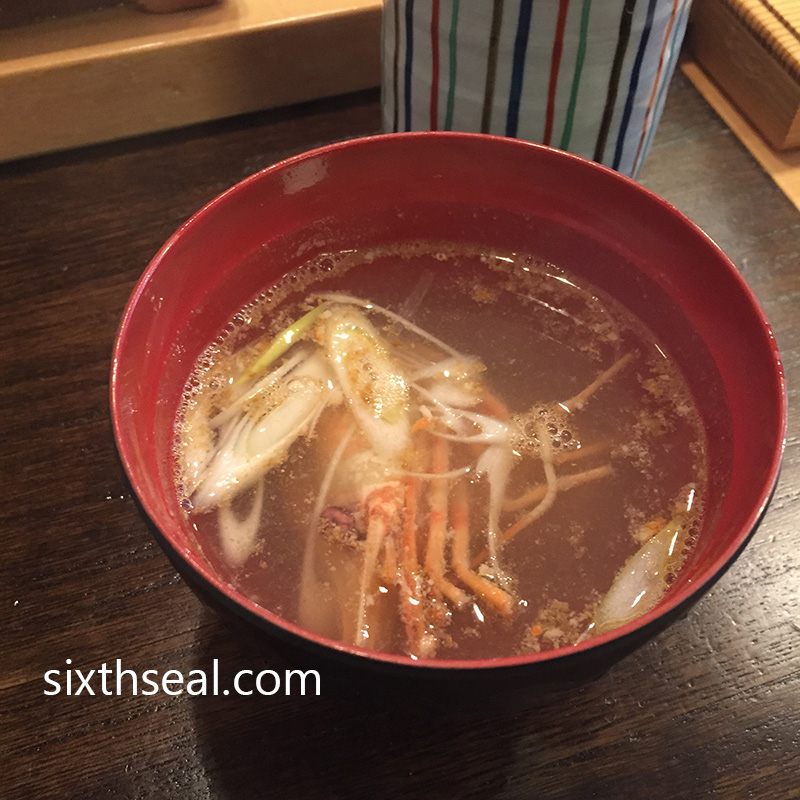
We were given a miso soup fortified with botan ebi (sweet Japanese jumbo shrimp) at the end of our meal.

I actually ordered two pieces of sushi a la carte after this. The first was to make up for a mistake. I was so enthusiastic about eating that when my tsubugai (whelk) sushi was served up, I actually *ate* it before my better half could take a photo. -_- Thus, I ordered it again so my dear could snap a quick picture. That’s how I have a photo even though I ate it before she could take it. We ordered it TWICE. She had it this time but didn’t like it coz it was too crunchy.
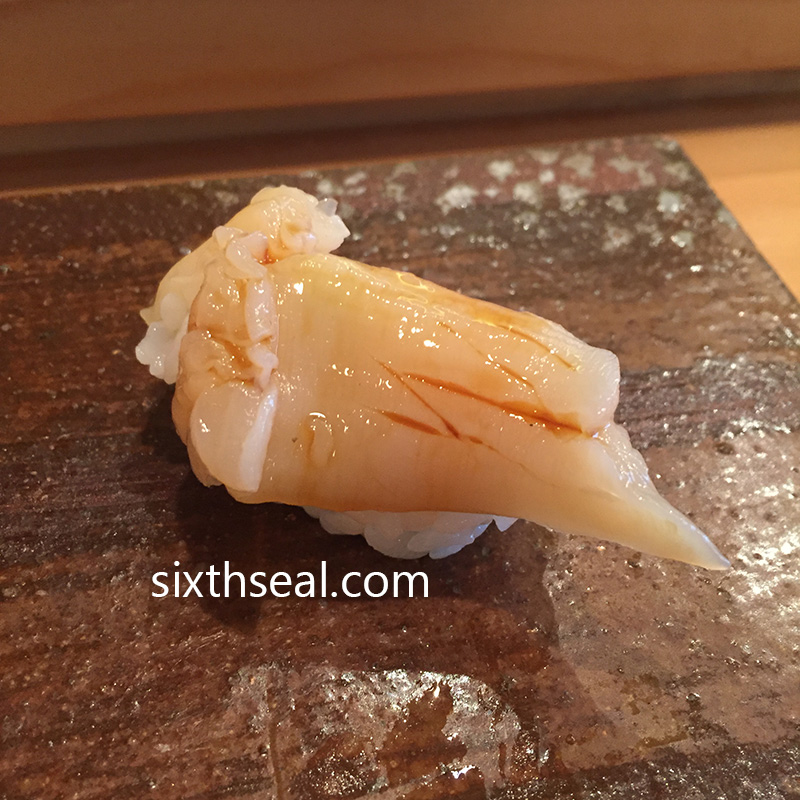
Shiro mirugai (Geoduck giant clam/海松貝) JPY 880
I wanted more, especially since I had perused the extensive a la carte sushi menu and found geoduck. I asked for shiro mirugai and was surprised (and a little embarrassed) to hear the collective gasps from the other diners beside us. The two Japanese women muttered amazed exclamations when the sushi chef presented the geoduck sushi to me. The lone Japanese male taking up the last counter seat grunted his approval too. It was very nice. I’ve never had geoduck raw before and it’s so fresh in Japan.
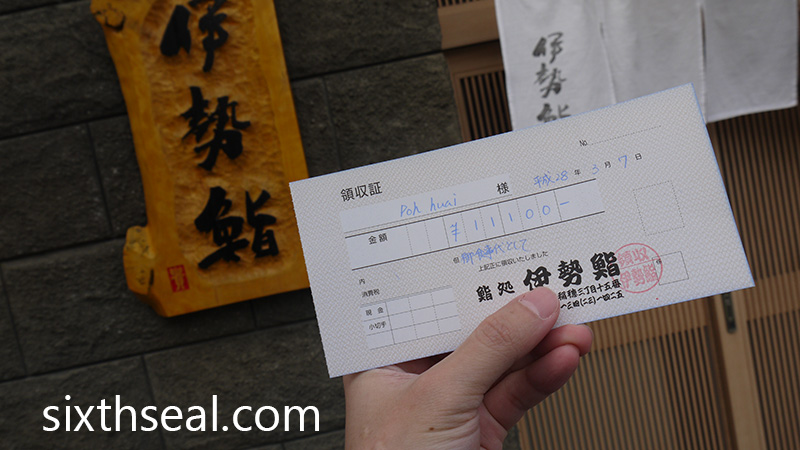
I later realized that the geoduck was the most expensive item in the a la carte menu, which explains the Japanese women’s reaction. My omakaze was nearly double the price of my dear’s despite only having 4 pieces more but the four pieces were premium items like otoro and icefish. The bill for the both of us came up to JPY 11,110 (RM 473 according to my exchange rates) which is very reasonable.
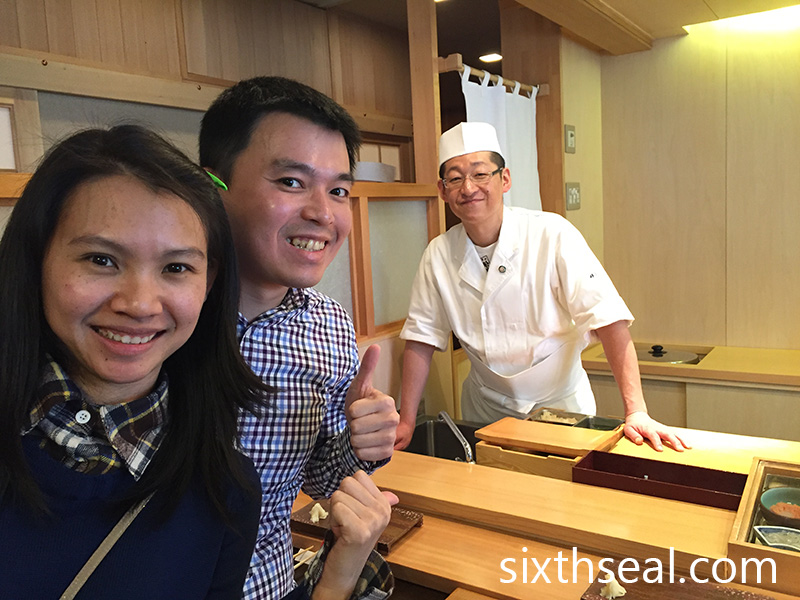
Isezushi (伊勢鮨) in Otaru, Hokkaido is a must-visit if you ever go there on a day trip. Be sure to make reservations and ask for a counter seat. The omakaze items changes depending on season so your neta (sushi topping) may vary. Oh, and the two nice Japanese aunties took a photo of us with the sushi chef. 🙂 We were really glad we had an authentic sushi experience at a 1 Michelin Star restaurant. It was truly a delightful afternoon in Isezushi.


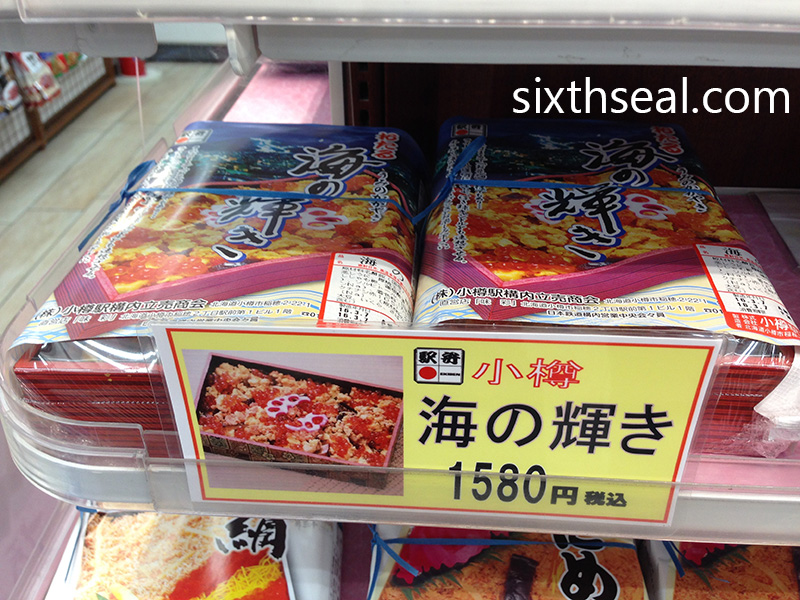
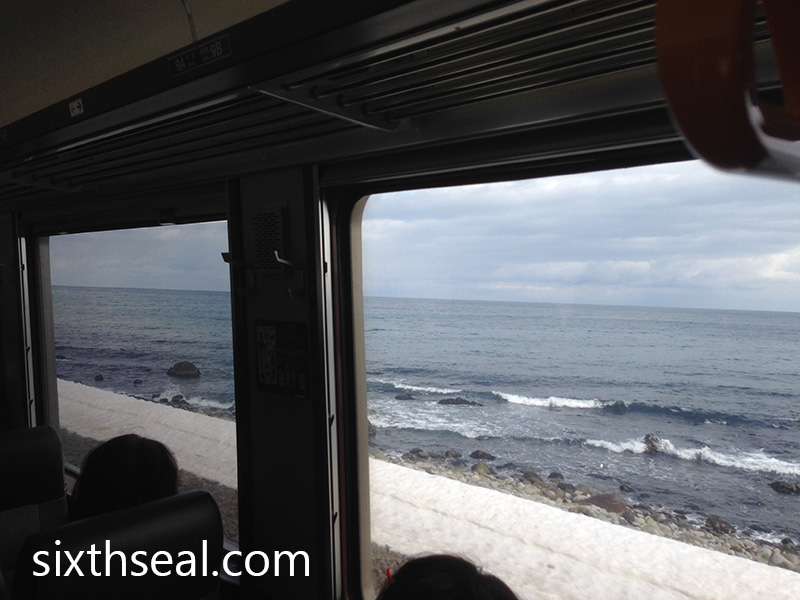



![]() ). I’m always happy to share with my better half. I cleaned every single morsel from the wappameshi (わっぱ飯 – thin, bent wooden box) and regretted not getting two.
). I’m always happy to share with my better half. I cleaned every single morsel from the wappameshi (わっぱ飯 – thin, bent wooden box) and regretted not getting two.
